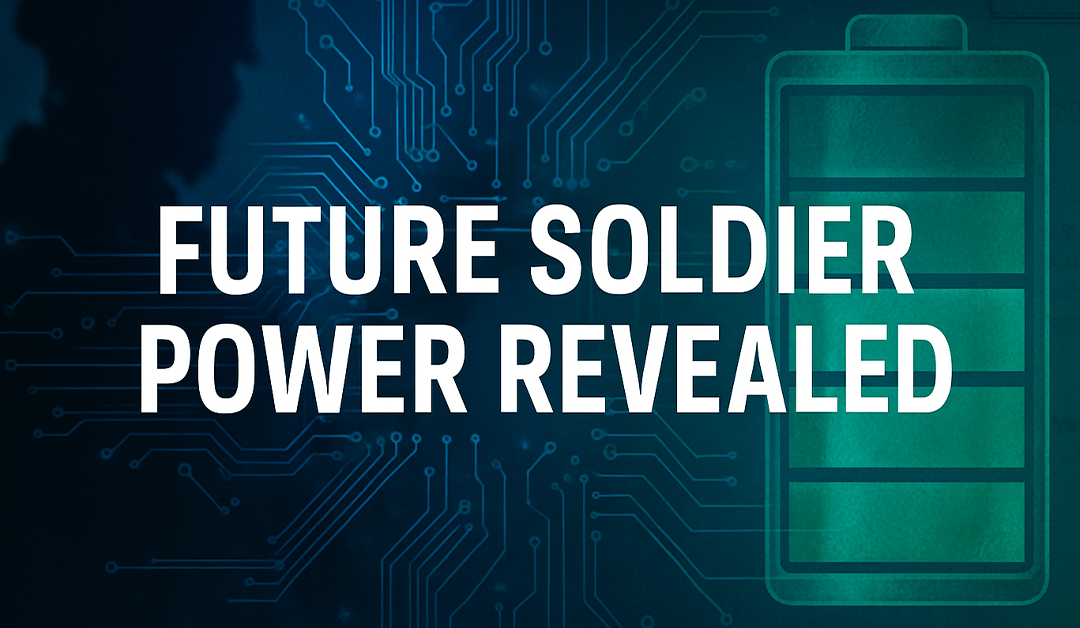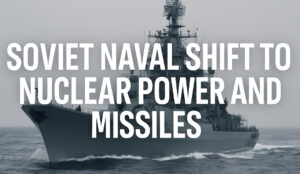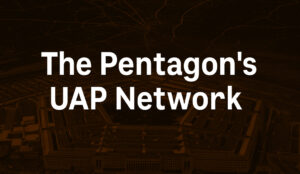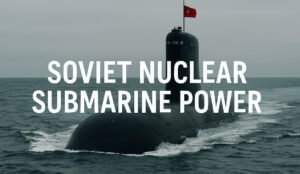In a document never meant for public eyes, the Defense Intelligence Agency (DIA) forecasted a radical transformation in military energy systems.
The 12-page analysis - obtained via FOIA by researcher John Greenewald - lays out a sweeping technological vision of how tomorrow’s warfighters could be powered by nuclear, microbial, wireless, and even piezoelectric energy sources.
The report, titled Technology Forecast: Nonconventional Energy Sources for the Future Soldier, describes a scenario in which troops shed the weight of traditional batteries for ultra-efficient generators, smart uniforms, and power-harvesting tech embedded into their environment.
"Compact, efficient, lightweight, and long-lasting energy technologies are emerging as a force multiplier in military affairs."
- Defense Intelligence Agency, 2009
🧠 Energy as a Weapon
The report highlights the growing global effort to build fully integrated, high-performance infantry. With more electronic equipment - GPS units, sensors, ruggedized tablets - soldiers are weighed down by batteries, not ammunition.
A single 72-hour mission could require carrying 30 pounds of battery weight just to sustain gear.
To solve this, the DIA explored everything from nano-engineered solar cells to nuclear microgenerators, imagining a future where energy was as weaponized as firepower.

🔬 Exotic Technologies on the Horizon
The report breaks down multiple unconventional energy sources, each with distinct applications, weight profiles, and energy densities:
-
Betavoltaic Batteries: Radiation-based batteries with an energy density 850x greater than lithium-ion.
-
Microturbine Generators: Compact turbines powered by hydrogen cartridges, potentially 10x more powerful than today’s best batteries.
-
Piezoelectric Fabrics: Materials in uniforms that generate electricity from motion and body heat.
-
Thermoelectric Harvesters: Embedded in tents, clothing, and vehicles to convert waste heat or sunlight into usable power.
-
Wireless Charging Systems: Embedded in transport vehicles and base structures to recharge devices without cables.
-
Microbial Fuel Cells: Long-duration sensors powered by bacteria, requiring little to no servicing for years.
-
Nanoantenna Solar Cells: Flexible, ultra-light sheets that convert a wider range of solar radiation than conventional panels.
"Microturbine generators have the potential to produce 10 times more power than today’s best lithium-ion batteries of the same weight."
- DIA Technology Assessment
🛰️ Field Test Scenario: A 2030 Conflict
The report envisions a plausible battlefield scenario:
Soldiers equipped with uniforms embedded with nanoantennas, piezoelectric fibers, and isotopic battery packs patrol in arid terrain.
Lightweight microturbine units recharge their gear, while motion-based generators and microbial sensors keep watch on the perimeter - autonomously, for months at a time.
Wind-harvesting towers disguised as masts power forward operating bases. Inside transport vehicles, waste heat is recycled into electricity.
Even tents absorb sunlight and convert ambient heat into usable power.
"Returning from patrol, soldiers charge their batteries by just leaving their backpacks in a large tent that houses wireless power transmitters."
This isn’t science fiction - it’s a classified vision of battlefield logistics underpinned by hard research.
🌍 Foreign Players in the Game
The DIA warns that despite the U.S.’s temporary lead, countries like China, Russia, Iran, South Korea, Japan, and Taiwan are making parallel advances - often by collaborating with American institutions or studying open-source scientific publications.
-
China: Tracking U.S. betavoltaic progress and co-developing piezoelectric generators
-
Russia: Researching Casimir effect implications in nano-generators
-
South Korea & Belgium: Optimizing power-processing circuits for piezoelectric devices
-
Japan: Forecasting 40% efficiency in quantum-dot solar cells by 2020
-
Germany, France, Iran: Collaborating on advanced nanoantenna tech
"Georgia Tech… is actively working with several Chinese and Taiwan universities on nanowire piezoelectric generators."
- DIA Report, Section on Foreign Research
This raised questions within the intelligence community about tech leakage and the dual-use risk of humanitarian energy innovations being weaponized abroad.
🧾 The Role of Nanotechnology
A recurring theme in the report is that nanotech is the enabler. From enhanced piezoelectrics to quantum-dot photovoltaics, the report suggests nanotechnology is the key to shrinking power systems without sacrificing output.
Energy harvesters are described as becoming:
-
More autonomous
-
Less weather-dependent
-
More seamlessly integrated into the soldier’s gear and surroundings
🧪 Zero-Point and Antimatter Mentions
Buried deep in the document is a brief reference to zero-point energy and antimatter - exotic sources acknowledged for their theoretical promise, but marked as "not practical in the next 25+ years."
Still, their inclusion signals the DIA’s willingness to monitor even fringe science for possible disruptive breakthroughs.
🧠 The Final Assessment
The report concludes that the U.S. holds a 5–10 year lead in most technologies surveyed - but warns that commercial interest in sectors like microbial fuel cells, quantum solar, and nanoantenna tech means the edge may not last.
"Technologies with strong commercial and humanitarian applications… will probably be developed and incorporated into military systems more quickly and at less cost."






